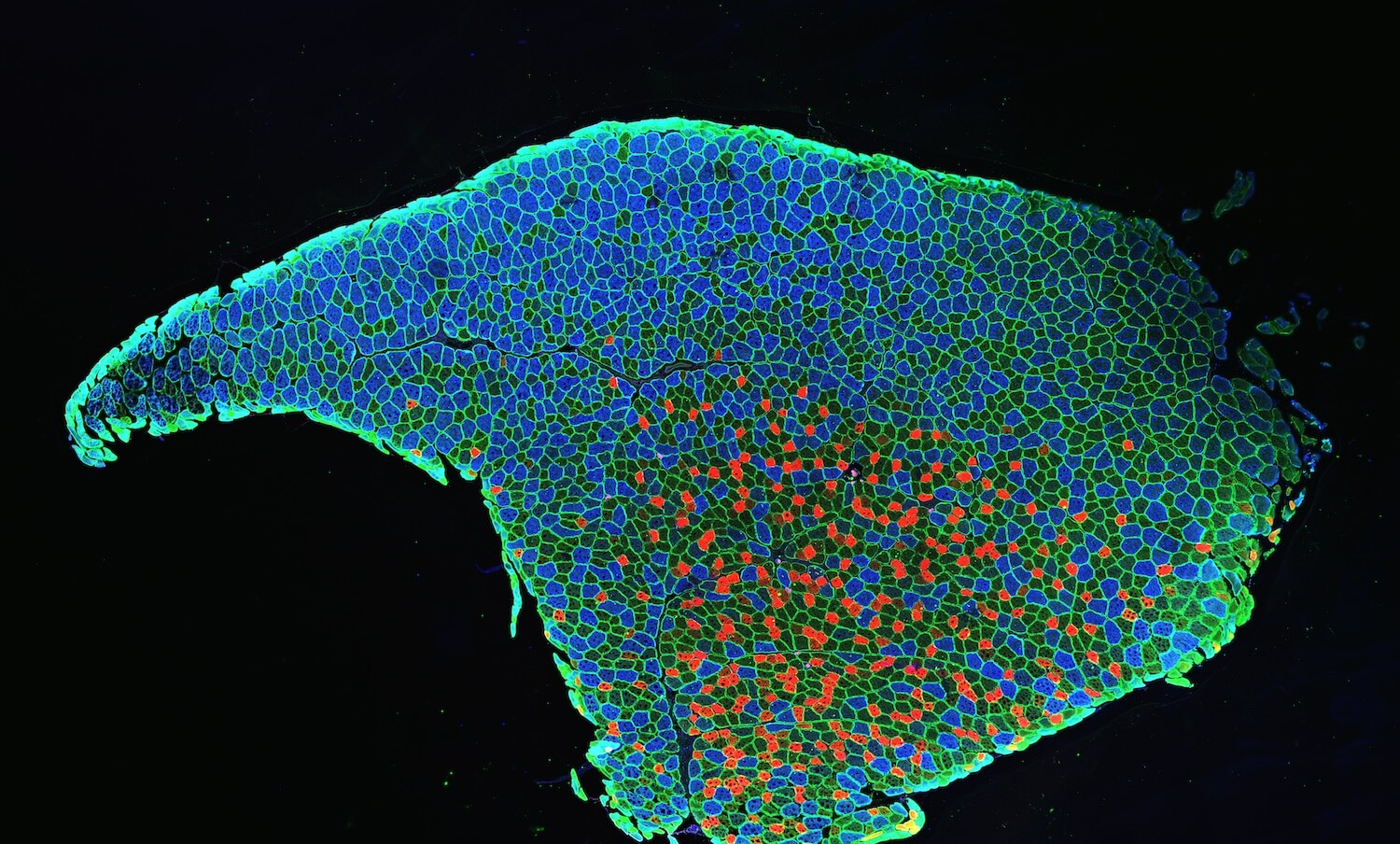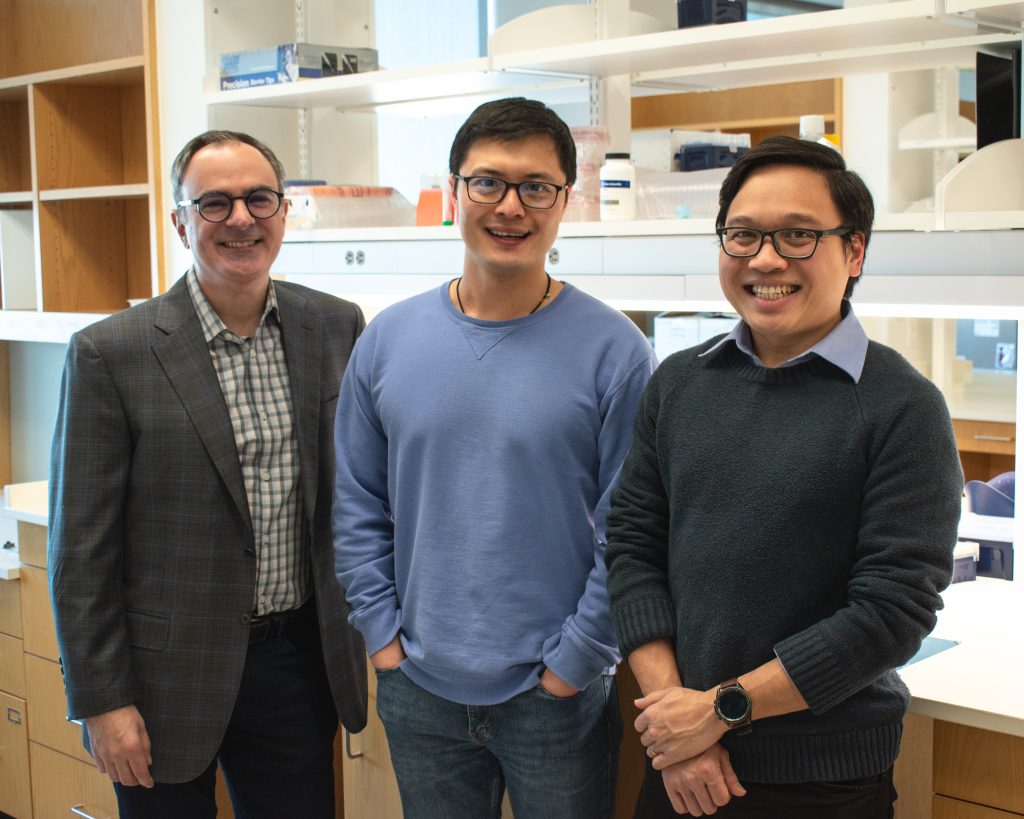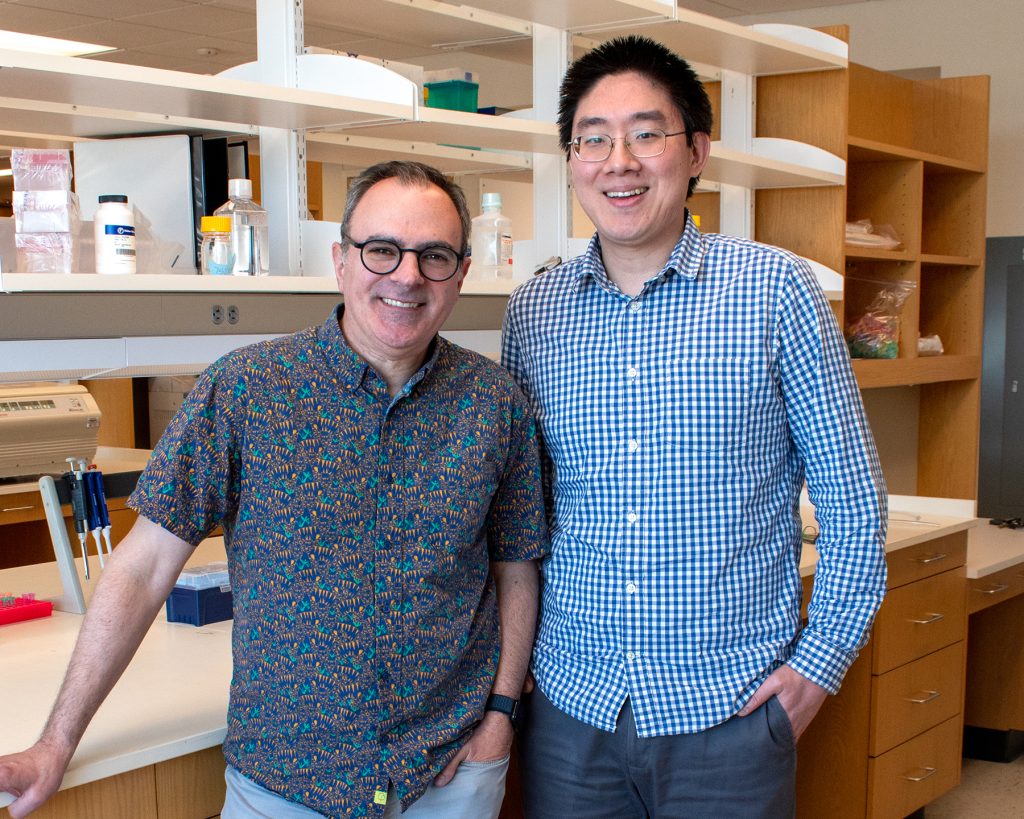
Cross-section of a complete mouse tibialis anterior muscle. Muscle fiber boundaries are shown in green. Different muscle fiber types are shown in red and blue.
Lactate, long considered to be a waste product of energy production, has been found to fuel the metabolism of patients with mitochondrial myopathy (MM) according to new research from the Mishra lab. MM is a type of mitochondrial disease that causes progressive muscle weakness and even death. Currently, no approved therapies to treat patients with this disease exist, but scientists in CRI hope findings from their study will offer new options. The unique fuel source identified in the study could be used to design supportive therapies to fuel normal tissue function and help patients live longer, healthier lives.
Within our cells, mitochondria play a critical role in converting food into the energy that cells need to function properly. In patients with MM, mutations in key genes keep muscles from producing energy, leading to debilitating symptoms such as poor muscle tone, exercise intolerance, muscle weakness, and even death. Previous studies in mitochondrial disease cell lines found these cells do not rely on mitochondria to make energy but instead switch to an alternative pathway called glycolysis. During this process, cells rapidly consume glucose, convert it to lactate, and excrete it as a waste product. Although this theory has not been tested in living organisms, it’s widely believed the same process occurs in patients with MM.
In their latest paper, published in Science Advance, researchers in the Mishra lab put the theory to the test. Using a mouse model of severe, early-onset MM that displays symptoms similar to those of children with MM, they made a surprising discovery. The muscles of the mice had reduced levels of enzymes for glycolysis and lower glycolytic activity. A retrospective analysis conducted by the team using data collected from muscle samples of children with severe forms of mitochondrial disease showed these patients also had lower enzyme levels for glycolysis.
The team identified the loss of a protein called Hif1alpha as the reason for reduced glycolysis. In healthy muscle tissue, Hif1alpha is responsible for increasing the levels of glycolytic enzymes, and, in its absence, muscles cannot function properly. When researchers re-established Hif1alpha levels in mouse models, glycolytic activity was restored. Together, these results suggest that the mice were not relying on glucose to survive.
In collaboration with Ralph DeBerardinis’ lab in CRI, the team investigated several potential fuel sources using isotope tracing techniques. Surprisingly, they identified lactate as the primary nutrient source for diseased muscle tissue. Traditionally, lactate is considered a waste product, and blocking its usage in healthy animals does not impact energy production. However, blocking lactate uptake in animals with mitochondrial disease reduces their lifespans, eventually leading to death.
“Findings from our study suggest that there are surprising changes in the nutrient requirements for patients suffering from mitochondrial muscle disease. In this case, what was once a waste product, lactate, now becomes an essential fuel source,” said Prashant Mishra, M.D., Ph.D., an Assistant Professor at CRI and lead author of the study. “Our findings complement previous work from the DeBerardinis lab and others that have shown our bodies can use lactate as a fuel source. We are excited to see if a dependence on lactate is a common feature of different muscle tissues and investigate the unique nutrition requirements of other mitochondrial diseases. These studies are an important step towards uncovering new targets for supportive therapies.”



